The best varieties of hydrangea paniculata and the rules for their cultivation
Queen of many gardens and parks hydrangea - an amazingly beautiful bush with lush caps of gentle flowering. She gives gardens a special style, her large luxurious flowers are a bright accent in many landscape compositions.
Content:
- Types of hydrangeas
- Panicle hydrangea varieties
- Correct planting of the plant
- Features of caring for a shrub
- Everything you need to know about breeding
- Application of colors in the design of the site
Types of hydrangeas
Hydrangea is a very popular plant and its hybrids are being selected quite actively. She can be erect treelike, curly and dwarf. Its inflorescences are formed in the form of a panicle, which is strewn with delicate multi-colored flowers. Leaves also come in different shapes: round, oval, wavy and jagged along the edge.
Many gardeners have the misconception that hydrangea is not a frost-resistant plant that requires a lot of attention. In fact, the resistance to different climatic conditions directly depends on the variety.
The family of hydrangeas is increasing every year and today it has about a hundred species.
These are mainly small and large shrubs and climbing species. In middle latitudes, paniculate, serrate and tree hydrangeas are better preserved. Lush bushes with spreading branches and incredibly beautiful flowers resemble lilacs from afar.
Shrub types:
- Treelike hydrangea is a bush that reaches a height of 2.5 meters, with sharp leaves and large multi-colored inflorescences. This is a winter-hardy and unpretentious type of plant, it is widely used for landscape design. Bushes love shaded areas and do not require shelter during the winter.
- The serrated hydrangea is a relatively tall tree-like shrub that grows up to two meters in height. She has dark green leaves, globular inflorescences mostly blue. The bushes of this type of hydrangea begin their flowering in early summer, and stop in the fall. The species can be grown in central Russia, it is better to cover it up for the winter.
- Panicle hydrangea - an incredibly beautiful and unusual bush. Grows in open ground and reaches three to five meters in height. Its leaves are elliptical, the inflorescences are large and very fragrant during flowering. The bush begins to bloom in early summer and blooms until the first frost. The variety can be grown in the northern part of Russia, as it is cold-resistant and tolerates -25C.
Hydrangea is a great material for many design solutions. It is distinguished by abundant flowering, easy care and excellent formation. From a bush of this type, you can form any shape that is only suitable for your garden, or personal plot.
Panicle hydrangea varieties
Hydrangea paniculata has many excellent varieties, such as:
- "Grandiflora". This is a rather massive bush with elongated leaves and large white inflorescences, which, at the end of flowering, begin to turn pink. Prefers fertile soil, grows up to two meters in height. The variety is frost-resistant.
- Vanilla Fries.A wide two-meter bush with white, later turning pink, large caps of flowers. It blooms later than its counterparts, loves moisture and a sunny side for planting, easily tolerates frost.
- Great Star. The bush is distinguished by oval glossy leaves and medium-sized inflorescences. The flowers themselves are large, consist of four petals. Hydrangea blooms in the middle of summer. The variety is frost-resistant, but it is better to cover it.
- Bobo. A dwarf species of plant, does not even reach one meter in height. It blooms with pink, white and yellowish flowers in the second half of summer. The bushes are successfully used to decorate flower beds in squares, front gardens and in any other areas. It is covered with mulch for the winter.
- "Unique". An exquisite two-meter bush blooms profusely with snow-white inflorescences, which also turn pink at the end of flowering. Looks great against the background of a green flower bed. It takes shelter for the winter, especially a young plant.
- "Phantom". The abundance of flowering makes the bush unusually delicate and attractive. For the splendor of flowering in the spring, its shoots are cut as much as possible.
- «polar bear". The most frost-resistant variety of panicle hydrangeas. It grows up to one and a half meters up and blooms from summer to the beginning of frost in white or light green color.
These varieties of hydrangea take root well, easily tolerate winter, have a very original appearance, and also lend themselves well to shaping.
Correct planting of the plant
This type of hydrangea grows well in loamy, structured and drained soil. The soil can be slightly acidic or neutral, since on alkaline soil the plant is often sick, slows down in growth and blooms little from a lack of iron.
The bushes love partial shade and cannot stand direct sunlight.
Saplings are planted before buds are set. For planting, a hole is prepared corresponding to the size of the root system of the seedling, then a mixture of bone meal and manure or a special feed mixture for hydrangeas purchased in advance is placed in it. Together with a lump of earth, the sprout is taken out of the planting container, transplanted into a hole, sprinkled with loosened soil, compacted and generously watered.
You can independently regulate the color of the flower using the acidity of the soil. To achieve the blue color of the inflorescence, the alkaline soil is flavored with aluminum salt, and to obtain a pink color, limestone is added to the acidic soil.
Features of caring for a shrub
Hydrangea is not a capricious flower and does not require special care skills. The name of the flower in translation from Greek means "a vessel filled with water", which means that the flower loves moisture. The soil under the plant should always be moist, so some gardeners add moss when planting in the hole, it helps to retain moisture and prevent the soil from drying out in extreme heat.
How to care for a shrub:
- Fertilizer. It should not be forgotten that the growth and flowering of hydrangeas, in a sense, also depend on the fertilizers with which the plant is processed. In the spring, during the first growing season, nitrogen fertilizers are applied, especially you need to carefully approach the fertilization of young plants. Nitrogen fertilizers are also applied before flowering in early summer. And in the fall, after the end of flowering (in September), the hydrangea is fed with potassium salt.
- Pruning bushes. Pruning plays an important role in the care of the plant, improper manipulation can damage it or stop flowering. Panicle hydrangea is only cut by a third, and old inflorescences are cut to healthy buds. The thickening of the bush is eliminated by pruning unnecessary and weak stems at the root. Dried inflorescences remain to winter on the branches, they will protect new buds from frost.
- Preparing for winter. Frost-resistant varieties of hydrangea tolerate winter well and only in the northern regions should they be covered. Covers only root system by hilling and shelter with mulch.If winter frosts reach -30C, you need to completely insulate the bush. Spunbond or lutrasil is useful for wrapping; a frame can be constructed on top and filled with straw. It is better to bent young bushes to the ground and cover with a piece of roofing material, the edges must be pressed with stones. After the last spring frosts, the frame is removed and the bush is released.
Everything you need to know about breeding
Hydrangea propagates in three ways: by seeds, layering and cuttings:
- Cuttings... When pruning hydrangea bushes, good shoots remain, which are quite suitable in order to root them. The cut branches are immersed in water for a couple of days, and then cuttings are cut from them to the desired size. They are immersed in a two-thirds wet mixture of sand and peat, covered with foil and sent to a cool place. So until spring the cuttings should take root.
- Reproduction by layering. To get a new sprout near the main adult bush of hydrangea, you need to bend a soft and preferably young shoot to the ground and pin it by any means at hand, then sprinkle this place with earth. When a branch pressed to the ground gives roots, it can be separated from the main bush, it will begin to grow on its own. Growth stimulants can be used to improve and accelerate rooting.
- Seed reproduction. Hydrangea can be propagated by seeds. They are sown in autumn in seedling containers filled with a mixture of peat soil and sand. Having planted the seeds, they need to be watered, and it is better to spray them with a spray, so as not to clog the soil. Then the containers are covered with glass or foil and sent to a warm place (15-20C). Every day they need to be opened, watered and allowed to breathe for future sprouts. A month later, when the first shoots appear, the film must be removed and the seedlings must be placed in a sufficiently lighted place. When the first leaves appear, sprouts dive... In the spring, the seedlings are transplanted into separate pots for further growth. In order for young plants to harden, they need to be taken outside on warm sunny days. Early flowering weakens the growth of a young bush, so the first buds are removed. It will be possible to plant a hydrangea in open ground only after a couple of years.
Application of colors in the design of the site
Due to its extremely refined and original appearance, panicle hydrangea has become popular with many amateur gardeners and designers. The shrub looks great both in a single planting and in a group with other plants. Bushes and trees will decorate any corners of a country house or summer cottage. Experiments with iron salts lead to incredible shades of flowers, they can even be pink-blue on the same branch.
Hydrangea can be planted along a hedge, it can divide the territory, dwarf varieties can be used for planting along the house or paths.
A beautiful bush can be planted in the center of a circular flower bed and combined with other flowering plants. Hydrangea near the gazebo will create coziness and a wonderful homely atmosphere.
Proper care, well-chosen variety panicle hydrangea and the landing site will make your site unusually beautiful and bright. The most beautiful flowers will not leave indifferent anyone who has ever looked at the rich, exquisite look of an amazing bush called hydrangea.
More information can be found in the video:



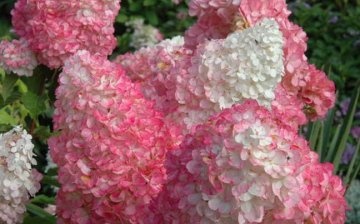
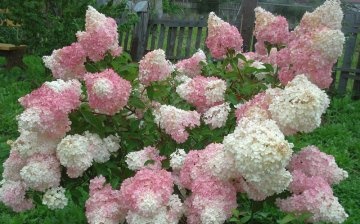
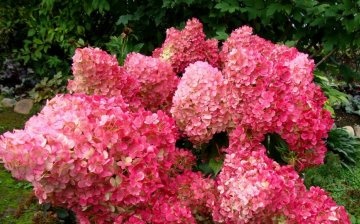
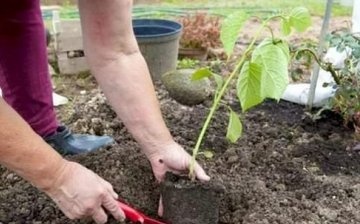
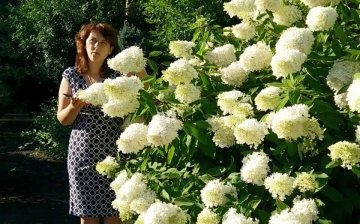
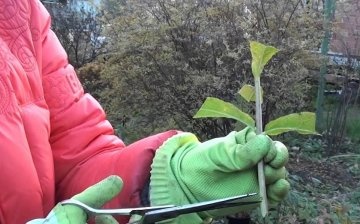
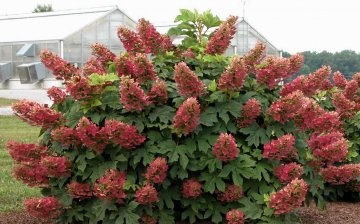







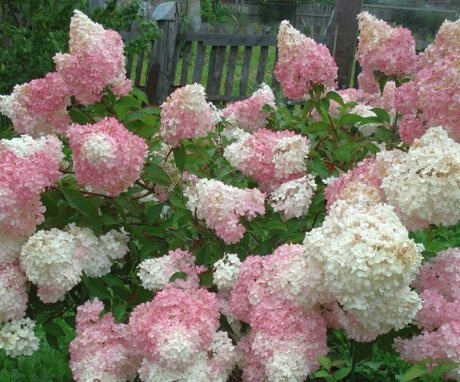
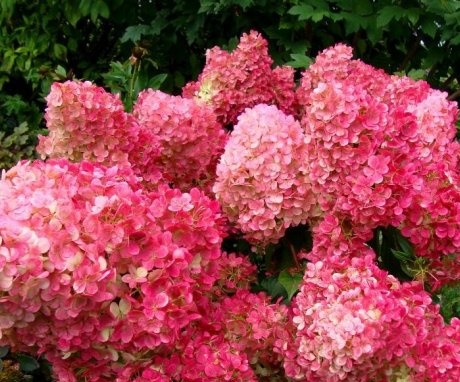
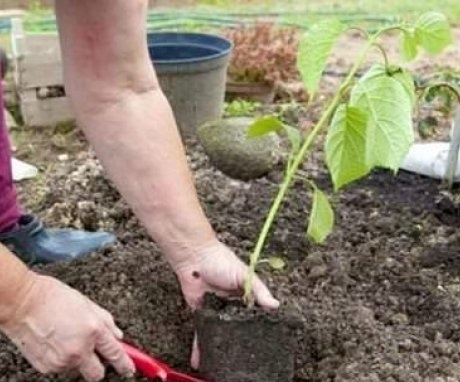
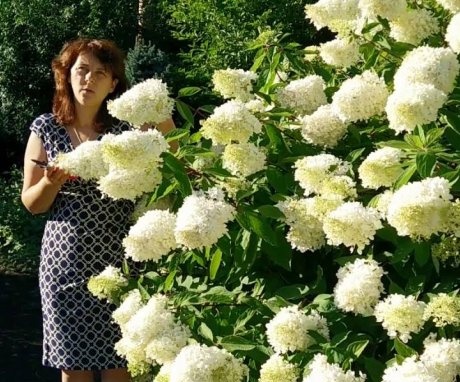

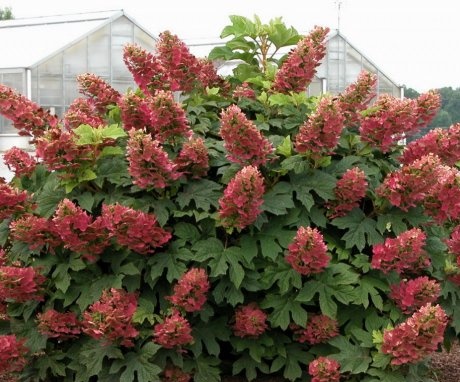
The fact that hydrangea is quite cold-resistant has long been known to us in the Urals.
And, here is the fact that the "pruning" of branches, especially old, "worn out", is already a science.
Although, usually, it is a pity to prune "under a bud", quite healthy, and seemingly young branch ...